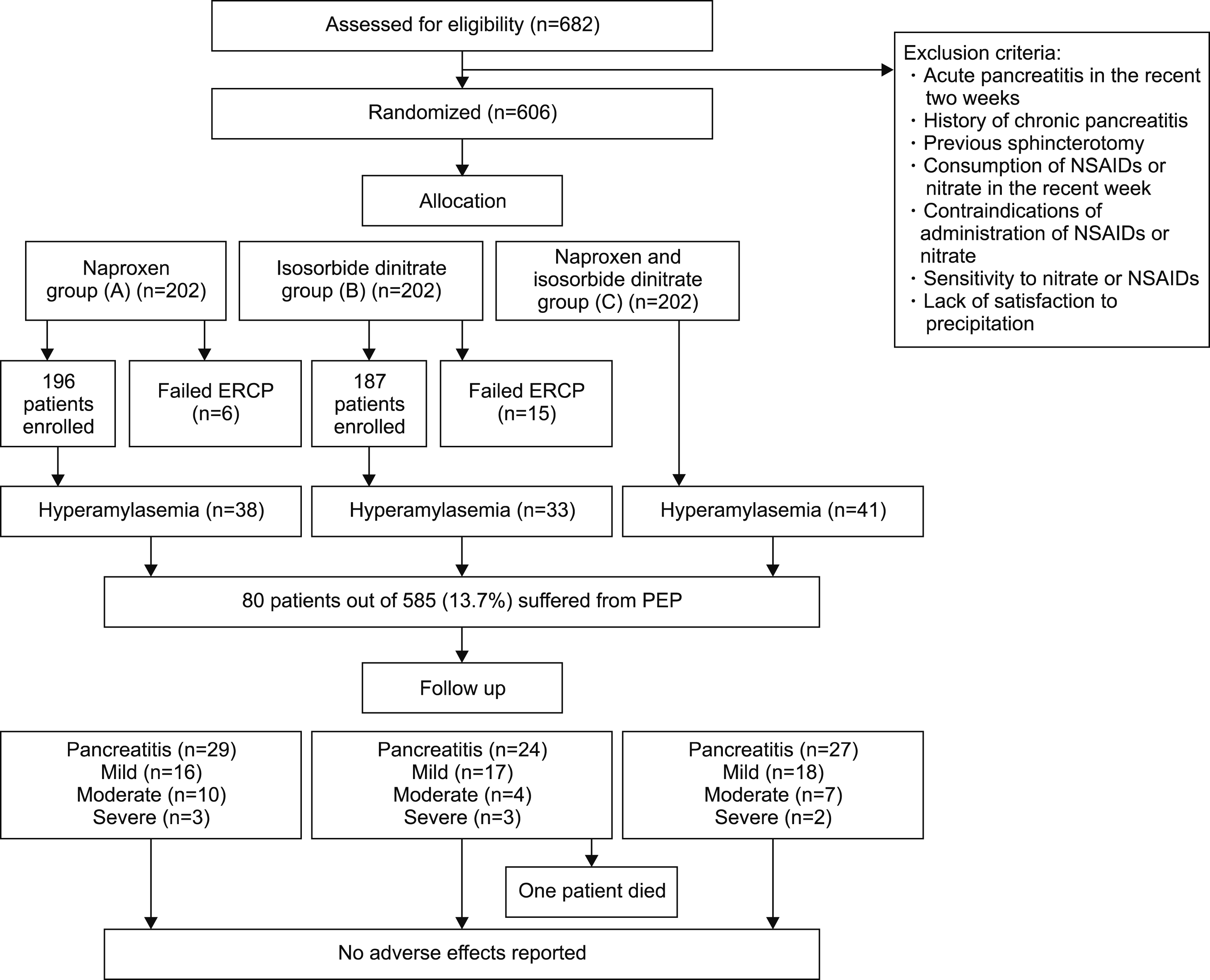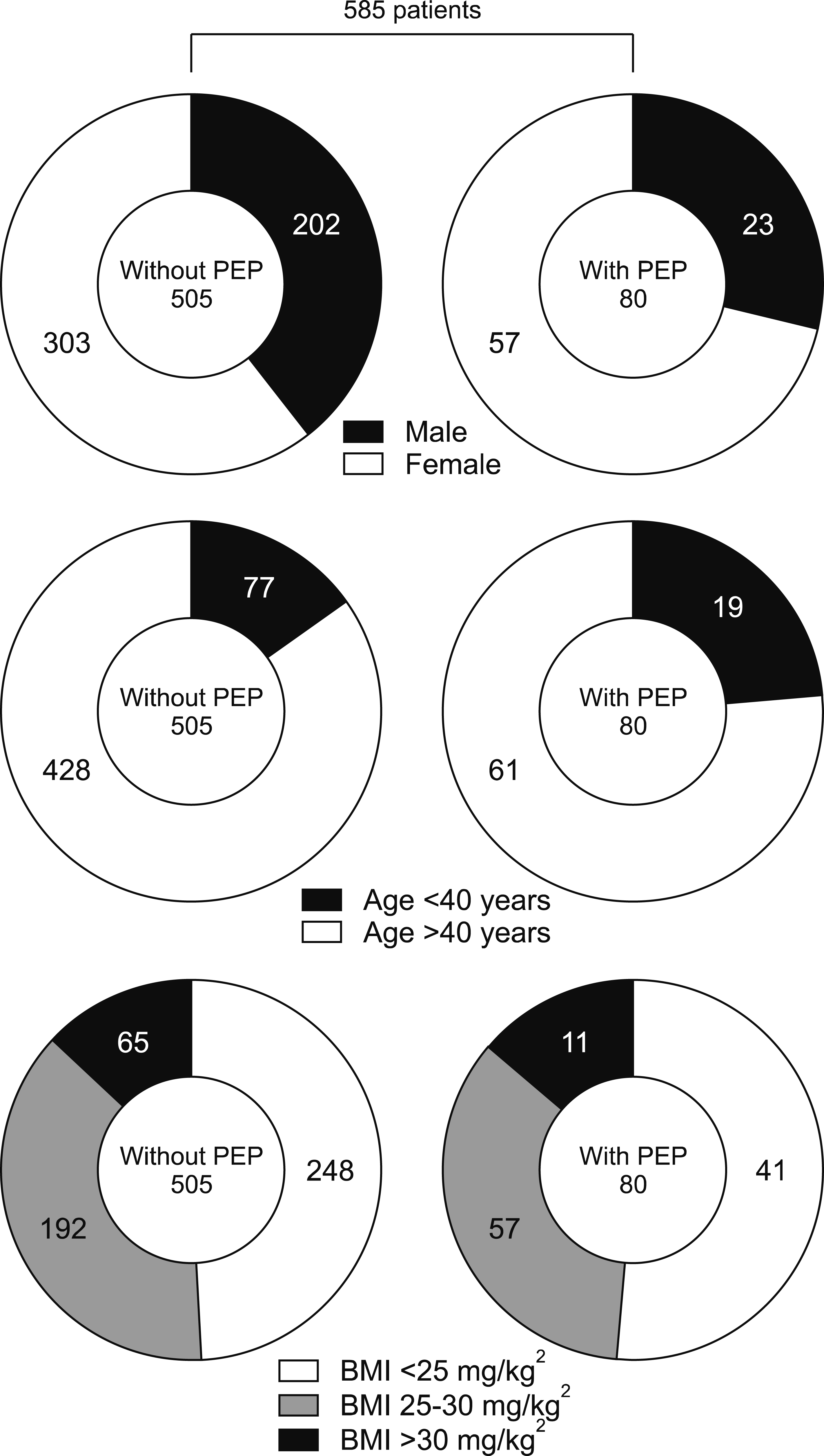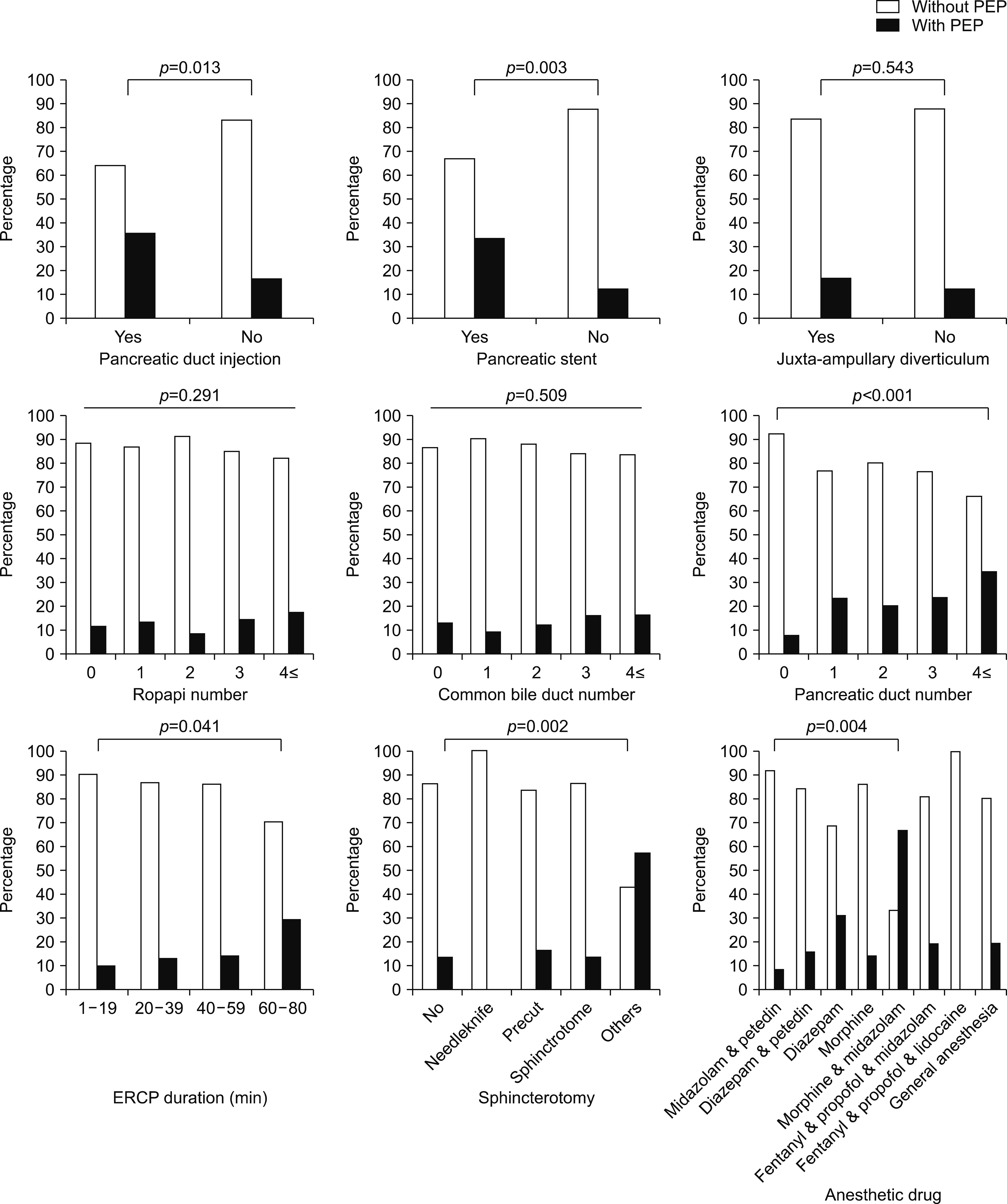1. Taghavi SA, Majd SK, Sianati M, Sepehrimanesh M. 2016; Prevalence of IgG-4-associated cholangiopathy based on serum IgG-4 levels in patients with primary sclerosing cholangitis and its relationship with inflammatory bowel disease. Turk J Gastroenterol. 27:547–552. DOI:
10.5152/tjg.2016.16344. PMID:
27852547.

2. Bai Y, Liu Y, Jia L, Jiang H, Ji M, Lv N, et al. 2007; Severe acute pancreatitis in China: etiology and mortality in 1976 patients. Pancreas. 35:232–237. DOI:
10.1097/MPA.0b013e3180654d20. PMID:
17895843.
3. Woods KE, Willingham FF. 2010; Endoscopic retrograde cholangiopancreatography associated pancreatitis: a 15-year review. World J Gastrointest Endosc. 2:165–178. DOI:
10.4253/wjge.v2.i5.165. PMID:
21160744. PMCID:
PMC2998911.

4. Arata S, Takada T, Hirata K, Yoshida M, Mayumi T, Hirota M, et al. 2010; Post-ERCP pancreatitis. J Hepatobiliary Pancreat Sci. 17:70–78. DOI:
10.1007/s00534-009-0220-5. PMID:
20012323.

5. Vandervoort J, Soetikno RM, Tham TC, Wong RC, Ferrari AP Jr, Montes H, et al. 2002; Risk factors for complications after performance of ERCP. Gastrointest Endosc. 56:652–656. DOI:
10.1016/S0016-5107(02)70112-0. PMID:
12397271.

6. Cotton PB, Lehman G, Vennes J, Geenen JE, Russell RC, Meyers WC, et al. 1991; Endoscopic sphincterotomy complications and their management: an attempt at consensus. Gastrointest Endosc. 37:383–393. DOI:
10.1016/S0016-5107(91)70740-2. PMID:
2070995.

7. Shah TU, Liddle R, Branch MS, Jowell P, Obando J, Poleski M. 2012; Pilot study of aprepitant for prevention of post-ERCP pancreatitis in high risk patients: a phase II randomized, double-blind placebo controlled trial. JOP. 13:514–518. DOI:
10.6092/1590-8577/855. PMID:
22964958. PMCID:
PMC3736573.
8. Zheng M, Chen Y, Bai J, Xin Y, Pan X, Zhao L. 2008; Meta-analysis of prophylactic allopurinol use in post-endoscopic retrograde cholangiopancreatography pancreatitis. Pancreas. 37:247–253. DOI:
10.1097/MPA.0b013e31816857e3. PMID:
18815544.

9. Lavy A, Karban A, Suissa A, Yassin K, Hermesh I, Ben-Amotz A. 2004; Natural beta-carotene for the prevention of post-ERCP pancreatitis. Pancreas. 29:e45–e50. DOI:
10.1097/00006676-200408000-00018. PMID:
15257114.
10. Matsushita M, Takakuwa H, Shimeno N, Uchida K, Nishio A, Okazaki K. 2009; Epinephrine sprayed on the papilla for prevention of post-ERCP pancreatitis. J Gastroenterol. 44:71–75. DOI:
10.1007/s00535-008-2272-8. PMID:
19159075.

11. Barkay O, Niv E, Santo E, Bruck R, Hallak A, Konikoff FM. 2008; Low-dose heparin for the prevention of post-ERCP pancreatitis: a randomized placebo-controlled trial. Surg Endosc. 22:1971–1976. DOI:
10.1007/s00464-007-9738-2. PMID:
18214607.

12. Kapetanos D, Kokozidis G, Christodoulou D, Mistakidis K, Sigounas D, Dimakopoulos K, et al. 2007; A randomized controlled trial of pentoxifylline for the prevention of post-ERCP pancreatitis. Gastrointest Endosc. 66:513–518. DOI:
10.1016/j.gie.2007.03.1045. PMID:
17725940.

13. Choi CW, Kang DH, Kim GH, Eum JS, Lee SM, Song GA, et al. 2009; Nafamostat mesylate in the prevention of post-ERCP pancreatitis and risk factors for post-ERCP pancreatitis. Gastrointest Endosc. 69:e11–e18. DOI:
10.1016/j.gie.2008.10.046. PMID:
19327467.

14. Jowell PS, Branch MS, Fein SH, Purich ED, Kilaru R, Robuck G, et al. 2011; Intravenous synthetic secretin reduces the incidence of pancreatitis induced by endoscopic retrograde cholangiopancreatography. Pancreas. 40:533–539. DOI:
10.1097/MPA.0b013e3182152eb6. PMID:
21499206.

15. Cheon YK, Cho KB, Watkins JL, McHenry L, Fogel EL, Sherman S, et al. 2007; Frequency and severity of post-ERCP pancreatitis correlated with extent of pancreatic ductal opacification. Gastrointest Endosc. 65:385–393. DOI:
10.1016/j.gie.2006.10.021. PMID:
17321236.

16. Wang AY. 2017; Medications and methods for the prevention of post-ERCP pancreatitis. Gastroenterol Hepatol (N Y). 13:188–191. PMID:
28539848. PMCID:
PMC5439140.
17. Thaker AM, Mosko JD, Berzin TM. 2015; Post-endoscopic retrograde cholangiopancreatography pancreatitis. Gastroenterol Rep. 3:32–40. DOI:
10.1093/gastro/gou083. PMID:
25406464. PMCID:
PMC4324870.

18. Elmunzer BJ, Scheiman JM, Lehman GA, Chak A, Mosler P, Higgins PD, et al. 2012; A randomized trial of rectal indomethacin to prevent post-ERCP pancreatitis. N Engl J Med. 366:1414–1422. DOI:
10.1056/NEJMoa1111103. PMID:
22494121. PMCID:
PMC3339271.

19. Levenick JM, Gordon SR, Fadden LL, Levy LC, Rockacy MJ, Hyder SM, et al. 2016; Rectal indomethacin does not prevent post- ERCP pancreatitis in consecutive patients. Gastroenterology. 150:911–917. quiz e19DOI:
10.1053/j.gastro.2015.12.040. PMID:
26775631. PMCID:
PMC4808426.
20. Inamdar S, Han D, Passi M, Sejpal DV, Trindade AJ. 2017; Rectal indomethacin is protective against post-ERCP pancreatitis in high-risk patients but not average-risk patients: a systematic review and meta-analysis. Gastrointest Endosc. 85:67–75. DOI:
10.1016/j.gie.2016.08.034. PMID:
27612923.
21. Luo H, Zhao L, Leung J, Zhang R, Liu Z, Wang X, et al. 2016; Routine pre-procedural rectal indometacin versus selective post-procedural rectal indometacin to prevent pancreatitis in patients undergoing endoscopic retrograde cholangiopancreatography: a multicentre, single-blinded, randomised controlled trial. Lancet. 387:2293–2301. DOI:
10.1016/S0140-6736(16)30310-5. PMID:
27133971.

22. Barkin JA, Souto EO, Barkin JS. 2017; Rectal indomethacin should be used routinely in all patients for prevention of post-ERCP pancreatitis. Gastrointest Endosc. 85:687–688. DOI:
10.1016/j.gie.2016.10.023. PMID:
28215777.
23. Feng Y, Navaneethan U, Zhu X, Varadarajulu S, Schwartz I, Hawes R, et al. 2017; Prophylactic rectal indomethacin may be ineffective for preventing post-endoscopic retrograde cholangiopancreatography pancreatitis in general patients: a meta- analysis. Dig Endosc. 29:272–280. DOI:
10.1111/den.12779. PMID:
27914176.
24. Hou YC, Hu Q, Huang J, Fang JY, Xiong H. 2017; Efficacy and safety of rectal nonsteroidal anti-inflammatory drugs for prophylaxis against post-ERCP pancreatitis: a systematic review and meta- analysis. Sci Rep. 7:46650. DOI:
10.1038/srep46650. PMID:
28440297. PMCID:
PMC5404221.

25. Patai Á, Solymosi N, Mohácsi L, Patai ÁV. 2017; Indomethacin and diclofenac in the prevention of post-ERCP pancreatitis: a systematic review and meta-analysis of prospective controlled trials. Gastrointest Endosc. 85:1144–1156.e1. DOI:
10.1016/j.gie.2017.01.033. PMID:
28167118.

26. Mohammad Alizadeh AH, Abbasinazari M, Hatami B, Abdi S, Ahmadpour F, Dabir S, et al. 2017; Comparison of rectal indomethacin, diclofenac, and naproxen for the prevention of post endoscopic retrograde cholangiopancreatography pancreatitis. Eur J Gastroenterol Hepatol. 29:349–354. DOI:
10.1097/MEG.0000000000000787. PMID:
27849643.

27. Shen C, Shi Y, Liang T, Su P. 2017; Rectal NSAIDs in the prevention of post-endoscopic retrograde cholangiopancreatography pancreatitis in unselected patients: systematic review and meta- analysis. Dig Endosc. 29:281–290. DOI:
10.1111/den.12816. PMID:
28112441.
28. Mansour-Ghanaei F, Joukar F, Taherzadeh Z, Sokhanvar H, Hasandokht T. 2016; Suppository naproxen reduces incidence and severity of post-endoscopic retrograde cholangiopancreatography pancreatitis: randomized controlled trial. World J Gastroenterol. 22:5114–5121. DOI:
10.3748/wjg.v22.i21.5114. PMID:
27275104. PMCID:
PMC4886387.

29. Bai Y, Xu C, Yang X, Gao J, Zou DW, Li ZS. 2009; Glyceryl trinitrate for prevention of pancreatitis after endoscopic retrograde cholangiopancreatography: a meta-analysis of randomized, double-blind, placebo-controlled trials. Endoscopy. 41:690–695. DOI:
10.1055/s-0029-1214951. PMID:
19670137.

30. Chen B, Fan T, Wang CH. 2010; A meta-analysis for the effect of prophylactic GTN on the incidence of post-ERCP pancreatitis and on the successful rate of cannulation of bile ducts. BMC Gastroenterol. 10:85. DOI:
10.1186/1471-230X-10-85. PMID:
20673365. PMCID:
PMC2921391.

31. Sotoudehmanesh R, Eloubeidi MA, Asgari AA, Farsinejad M, Khatibian M. 2014; A randomized trial of rectal indomethacin and sublingual nitrates to prevent post-ERCP pancreatitis. Am J Gastroenterol. 109:903–909. DOI:
10.1038/ajg.2014.9. PMID:
24513806.

32. Seta T, Noguchi Y. 2011; Protease inhibitors for preventing complications associated with ERCP: an updated meta-analysis. Gastrointest Endosc. 73:700–706. e1–e2. DOI:
10.1016/j.gie.2010.09.022. PMID:
21145053.

33. Concepción-Martín M, Gómez-Oliva C, Juanes A, Díez X, Prieto-Alhambra D, Torras X, et al. 2014; Somatostatin for prevention of post-ERCP pancreatitis: a randomized, double-blind trial. Endoscopy. 46:851–856. DOI:
10.1055/s-0034-1377306. PMID:
24977398.

34. Romagnuolo J, Hilsden R, Sandha GS, Cole M, Bass S, May G, et al. 2008; Allopurinol to prevent pancreatitis after endoscopic retrograde cholangiopancreatography: a randomized placebo-controlled trial. Clin Gastroenterol Hepatol. 6:465–471. quiz 471. DOI:
10.1016/j.cgh.2007.12.032. PMID:
18304883.

35. Buxbaum J, Yan A, Yeh K, Lane C, Nguyen N, Laine L. 2014; Aggressive hydration with lactated Ringer's solution reduces pancreatitis after endoscopic retrograde cholangiopancreatography. Clin Gastroenterol Hepatol. 12:303–307. e1. DOI:
10.1016/j.cgh.2013.07.026. PMID:
23920031. PMCID:
PMC3879172.

36. Shao LM, Chen QY, Chen MY, Cai JT. 2010; Nitroglycerin in the prevention of post-ERCP pancreatitis: a meta-analysis. Dig Dis Sci. 55:1–7. DOI:
10.1007/s10620-008-0709-9. PMID:
19160042.

37. Wang AY, Strand DS, Shami VM. 2016; Prevention of post-endoscopic retrograde cholangiopancreatography pancreatitis: medications and techniques. Clin Gastroenterol Hepatol. 14:1521–1532. DOI:
10.1016/j.cgh.2016.05.026. PMID:
27237430.

38. Anderson MA, Fisher L, Jain R, Evans JA, Appalaneni V, et al. , ASGE Standards of Practice Committee. 2012; Complications of ERCP. Gastrointest Endosc. 75:467–473. DOI:
10.1016/j.gie.2011.07.010. PMID:
22341094.

40. Andriulli A, Forlano R, Napolitano G, Conoscitore P, Caruso N, Pilotto A, et al. 2007; Pancreatic duct stents in the prophylaxis of pancreatic damage after endoscopic retrograde cholangiopancreatography: a systematic analysis of benefits and associated risks. Digestion. 75:156–163. DOI:
10.1159/000106774. PMID:
17684365.

42. Kozarek RA. 1990; Pancreatic stents can induce ductal changes consistent with chronic pancreatitis. Gastrointest Endosc. 36:93–95. DOI:
10.1016/S0016-5107(90)70958-3. PMID:
2335298.

43. Smith MT, Sherman S, Ikenberry SO, Hawes RH, Lehman GA. 1996; Alterations in pancreatic ductal morphology following polyethylene pancreatic stent therapy. Gastrointest Endosc. 44:268–275. DOI:
10.1016/S0016-5107(96)70163-3. PMID:
8885345.





 PDF
PDF Citation
Citation Print
Print






 XML Download
XML Download